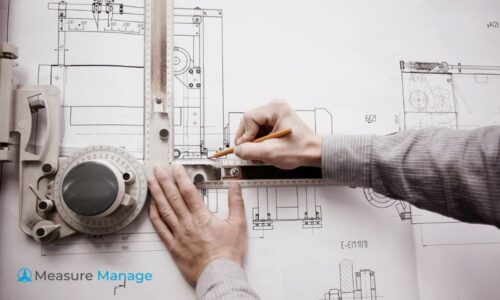In the world of construction, accurate project costing is essential to ensuring that a project stays on budget and on time. One of the most valuable tools for achieving this is the Bill of Quantities (BoQ). However, preparing a BoQ can be a complex and detailed process.
In this step-by-step guide, we’ll walk you through the process of creating a Bill of Quantities and show you how it can benefit your construction project.
What is a Bill of Quantities (BoQ)?
A Bill of Quantities (BoQ) is a document that lists the materials, labor, and services required to complete a construction project. It provides a detailed breakdown of each task and component needed for the project and assigns quantities to each item.
The purpose of a BoQ is to give contractors, clients, and project managers a clear understanding of the project’s scope and cost.
Creating a BoQ typically involves working from the project’s design drawings and specifications. The document is prepared by a quantity surveyor or estimator and is used during the tendering process to ensure that all contractors are quoting based on the same scope of work.

Step-by-Step Guide to Creating a Bill of Quantities
Understand the Project Specifications
The first step in preparing a BoQ is to thoroughly review the project’s specifications. This includes understanding the scope of the project, the materials required, the construction methods to be used, and the labor needed to complete the job. The project’s architectural drawings, structural drawings, and technical specifications will provide the foundation for creating the BoQ.
At this stage, it’s essential to be as detailed as possible. Missing a critical component at this point can lead to costly mistakes later in the project. A BoQ should include all the elements of the project, from major materials like concrete and steel to smaller components like nails and fasteners.
Perform Quantity Takeoffs
Once you have a clear understanding of the project’s requirements, the next step is to perform a quantity takeoff. A quantity takeoff involves measuring the quantities of each material and component needed for the project. This includes calculating the volumes, areas, lengths, and numbers of items based on the project drawings.
Tools like Bluebeam and Excel can be used to perform these calculations quickly and accurately. At Measure Manage, we use Bluebeam for takeoffs to ensure that every detail is captured with precision.
Classify and Group Items
After completing the takeoff, the next step is to classify and group the items into logical categories. Typically, items are grouped based on the type of work, such as:
- Site work
- Substructure
- Superstructure
- Finishes
- Mechanical and electrical services
By grouping items in this way, you create a structured document that’s easy for contractors and project managers to follow. Grouping items also helps in comparing quotes during the tendering process, as it ensures that all contractors are pricing the same set of tasks.
Assign Unit Rates and Costs
The next step in creating a BoQ is to assign unit rates and costs to each item. Unit rates refer to the cost per unit of material or labor, such as the cost per cubic meter of concrete or the hourly wage of a skilled laborer.
To determine the unit rates, you will need to consider several factors, including:
- Current market prices for materials and labor
- The complexity of the task
- The location of the project, which can affect transportation and labor costs
Unit rates may vary depending on the project’s size, location, and complexity. Once the unit rates have been assigned, calculate the total cost for each item by multiplying the unit rate by the quantity.
Summarize the Totals
After assigning costs to each item, you can summarize the total costs for each category and the overall project. This summary gives the project owner and contractor a clear idea of the project’s total cost and the breakdown of those costs by category.
The summary should also include a section for provisional sums, which are allowances for items that cannot be priced accurately at the time the BoQ is prepared. This may include contingencies for unexpected expenses or changes in scope.
Review and Finalize the BoQ
Once the BoQ is complete, it’s essential to review the document carefully. Ensure that all quantities are accurate, that no items have been omitted, and that the unit rates reflect current market conditions. It’s also important to double-check the calculations to avoid any errors that could affect the project’s budget.
At Measure Manage, we place a strong emphasis on accuracy and attention to detail during the review process. We use advanced software tools and our team’s expertise to ensure that every BoQ we prepare is accurate, reliable, and free from errors.

The Benefits of Using a Bill of Quantities
Creating a detailed BoQ has numerous benefits for construction projects, including:
Cost Control
A BoQ provides a clear and detailed breakdown of the project’s costs, helping contractors and project managers monitor expenses throughout the construction process. This level of detail allows for better budgeting and helps prevent cost overruns.
Transparent Tendering
During the tendering process, a BoQ ensures that all contractors are bidding based on the same scope of work. This transparency allows clients to compare bids more easily and choose the best contractor for the project.
Accurate Resource Planning
A BoQ helps project managers plan resources efficiently, ensuring that the right materials and labor are available at the right time. This leads to smoother project execution and fewer delays.
Risk Mitigation
By providing a clear and detailed breakdown of costs, a BoQ helps mitigate the risk of disputes between contractors and clients. Both parties have a reference point for resolving any discrepancies that may arise during the project.
Managing Variations
Changes to the project’s scope are common in construction. A BoQ provides a solid foundation for managing variations, ensuring that changes are accounted for and costed accurately.
Why Choose Measure Manage for BoQ Services?
At Measure Manage, we specialize in preparing detailed and accurate Bills of Quantities for construction projects of all sizes. Our team of experienced quantity surveyors uses the latest software tools, including Bluebeam and Excel, to ensure that every BoQ we produce is precise, reliable, and tailored to your project’s specific needs.
Whether you’re working on a residential, commercial, or civil engineering project, we can help you stay on budget and on track with a professionally prepared BoQ.
Create an Accurate BoQ for Your Next Project
Creating a Bill of Quantities may seem like a daunting task, but it’s an essential step in ensuring the success of your construction project. By following the steps outlined in this guide, you can create a detailed and accurate BoQ that helps you manage costs, plan resources, and keep your project running smoothly.
Contact Measure Manage today to learn more about our BoQ services and how we can help you create a reliable and accurate BoQ for your next construction project.




